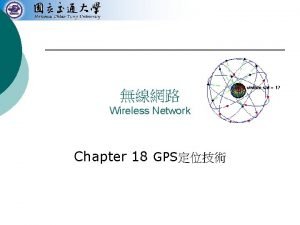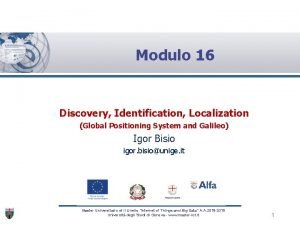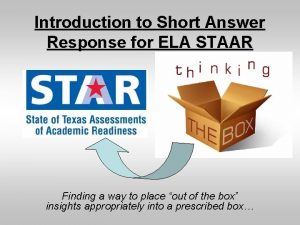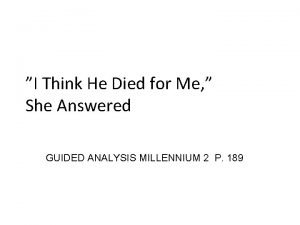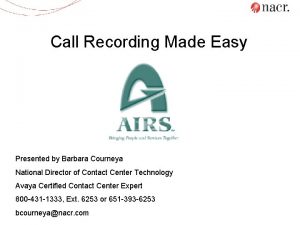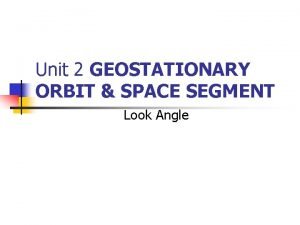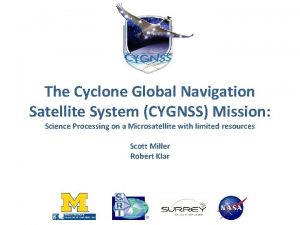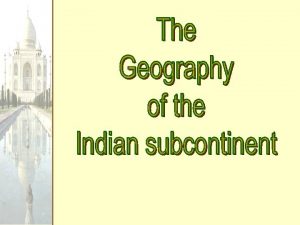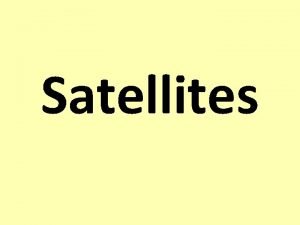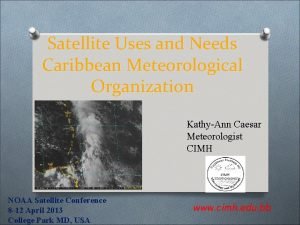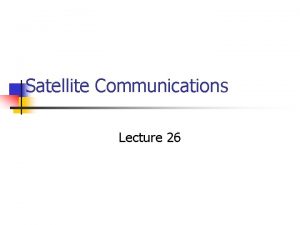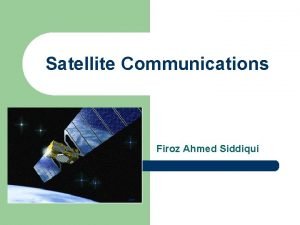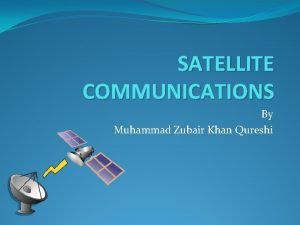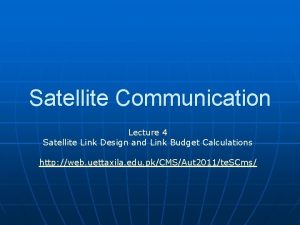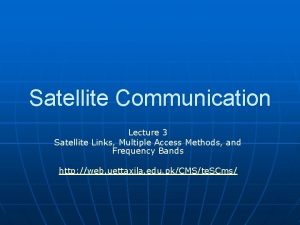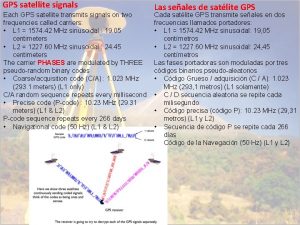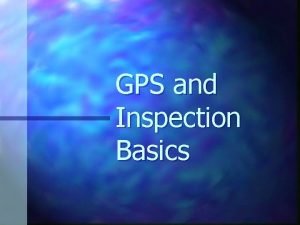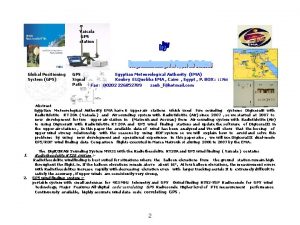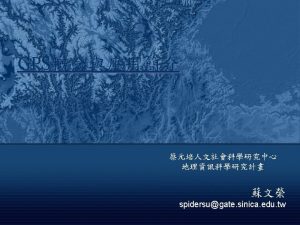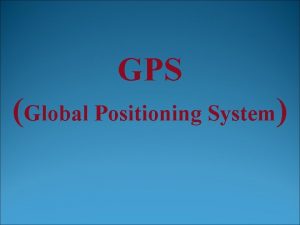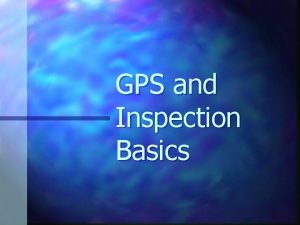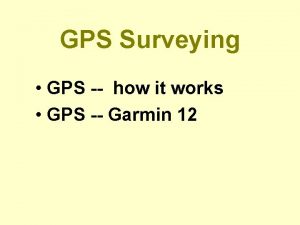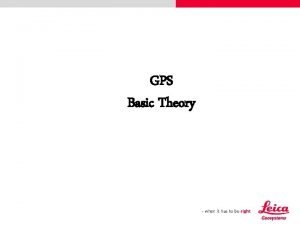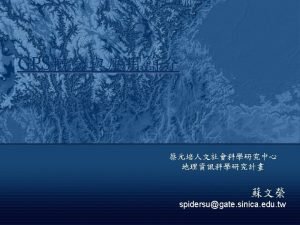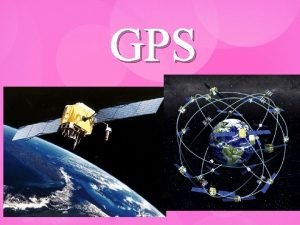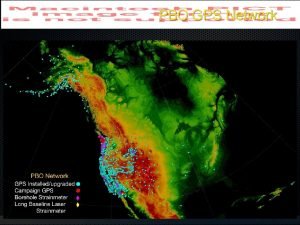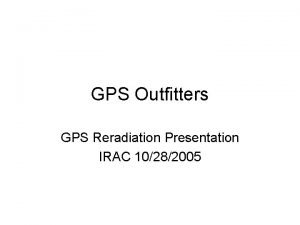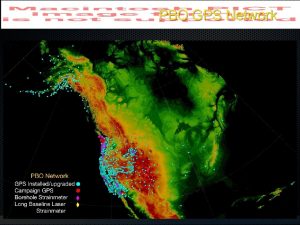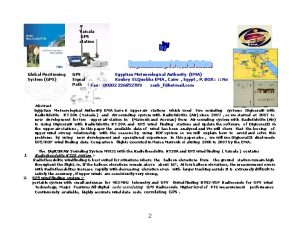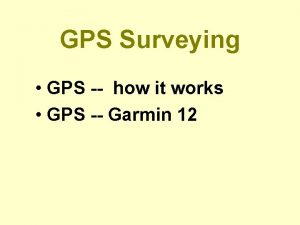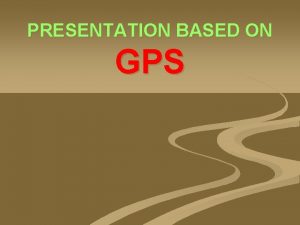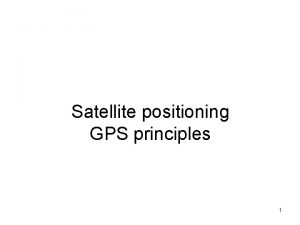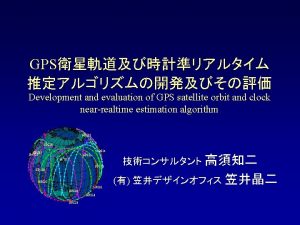GPS Questions Answered Tim Mc Call Dynamic Satellite




























- Slides: 28

GPS Questions Answered Tim Mc. Call Dynamic Satellite Surveys Presented at the 23 rd Annual Mine Surveyors Seminar, Aug 2005

The Datum Question • Q: Datums Which ones are used? Am I using the correct one? • A: Datums in Australia were/are: – – – Plane Clarke 1858, and projection in yards AGD 66/84, and projection in AMG GDA 94, and projection in MGA ISG and ISG 2000 (using AGD and GDA) Many others

Datums…cont. . Plane • Plane- usually set up for convenience – No correction to bearings or distances – Based on and coordinate of a point • eg. 10, 000 N, 5000 E arbitrary or perhaps on an AMG coordinate of the datum point. • Bearing is often magnetic – Usually set up by a non-surveyor or a cadastral surveyor for simplicity. – Always causes problems over larger areas.

Datums…cont. . Clarke • Pre- 1966 we used Clarke 1858: • Semi-major axis (a): 20 926 348 ft Flattening (f): 1/294. 26 • 1 Clarke Foot = 0. 3047 9726 54 metres, giving a = 6 378 293. 645 metres. • Many coordinates were expressed in Clark Yards. • Different origins in different Cities

Datums…cont. . AGD 66/84 • • April 1965 new spheroid ANS Semi-major axis (a): 6 378 160 metres Flattening (f): 1/298. 25 Final definition of the Australian Geodetic datum used Johnstone as the datum point • Johnston S 25° 56' 54. 5515", E 133° 12' 30. 0771" 571. 2 metres (ellipsoid height) • AMG is a UTM projection based on AGD using 6˚ zones • AGD 84 was a redefinition based on better data, and a more complete adjustment

Datums…cont. . GDA 94 • GDA was introduced to be more compatible with GPS- uses the same the GRS 80 ellipsoid, and the ITRF 92 (epoch 94) reference frame. • So, for most purposes, GPS lats and longs are GDA lats and longs. • MGA is a UTM projection using GDA datum. • Integrated Survey Grid (NSW) was based on AMG (using 2˚zones) • ISG 2000 is base on GDA datum, with 2 ˚ Zones.

Datums…cont. . Plane • Are you using the correct datum? – Do some checks to external control – Do extra internal checks – Researchives to find the origin point. – The year may give a clue (general guide only) • • Pre 1966 clarke, plane or other Pre 1966 -84 AGD 66 1984 -2000 AGD 84 Qld, AGD 66 in NSW 2000+ GDA

Types of GPS surveys • Q: What are the different types of GPS surveys and what are the applications and accuracies of each. • A: Static – Kinematic – Real Time Differential – Point Position

Types of Surveys…cont…Static • Requires 10 minutes (rapid static) to many hours observations (zero order stations) • Achieves the best accuracy of GPS techniques (10 mm+1 ppm) • Usually baselines are formed into a Network for better results. • Provides a full traceability, with all calculations being repeatable, networks provide quality checks • The best GPS can get. Requires long occupation times, but rewards with full traceability and the best accuracy and precision. • Requires post processing • Base station networks, high order control

Types of Surveys…cont …Kinematic • Requires some initialisation (either on the fly or static) • Needs only one epoch on the point (one to 10 seconds) (SP 1 says use 5 -10 epochs) • Can be re-processed forward, and reverse for better QC and tracability. • Accuracy of 20 mm +2 ppm • Very easy way to pick up enourmous amounts of data, as long as there are no trees. • Can be a long way from the base station, but requires post processing.

Types of Surveys…cont…RTK • Real Time Kinematic requires a telemetry link (radio, phone etc) to a base station. • Requires some initialisation, but usually less than 10 minutes • Gives instant results…. What you see is where you are. • Very limited traceability, as the base station corrections are not stored. • Can initialise incorrectly, and all subsequent results will be incorrect. Beware of long baseline initialisations • Can give accuracies of 20 mm+2 ppm, but is very geometry dependant. • Useful for general day to day surveys, BUT make sure you have checks

Types of Surveys…cont… Real Time Differential • Real Time Differential requires a telemetry link (radio, phone etc) to a base station. (can use AMSA beacon) • Doesn’t require initialisation • Gives instant results…. What you see is where you are. • Very limited traceability, as the base station corrections are not stored. • Accuracies of around 1 -2 m • Useful fast acquisition tool with low cost units.

Types of Surveys…cont… Point Position • Need only a very low cost reciever • Gives instant results…. What you see is where you are. • Very limited traceability • Can give accuracies 5 -20 m • Tells you what paddock you are in • Useful tool for geologists

RTK and CMA • Q: As RTK is 99 percent of my work, what checks are required to ensure accuracy and comply with standards? • A: What is the accuracy of RTK? – Typically 20 mm+2 ppm (some claim 10+1 ppm) – Measures are instantaneous, and but subject to initialisation (if that’s wrong, your toast). – To prove accuracy, should repeat from a different base, at a different time of day.

RTK and CMA…. cont • Client wants 50 mm at 95% Confidence Interval – Manufactures SD is 10 mm+2 ppm, but add another 10 mm for wobble. So 20 mm+2 ppm - Vertical is 20 mm +3 ppm, but add another 5 mm for pole reading error so 25 mm+3 ppm. - Two RTK baselines from different bases, to two stations close together.

RTK and CMA…. cont • • • • • • RTK Accuracy required Confidence Interval Distance Base A Base B ap fixed ap Scalar Accuracy Accuracies Achievable Worksheet Coords Height 0. 05 This worksheet assumes NO error in the 95% base stations coordinates or heights 5000 2000 0. 020 0. 025 Use 10 mm +10 wobble, vert=20+5 error 2 E-06 3 E-06 2 ppm for horz, 3 ppm for vert σ(A-1) σ(B-1) σ 1 2. 45σ 1(95%) σ 1(mean) ap 0. 030 0. 024 0. 038 0. 094 0. 019 ap 0. 040 0. 031 0. 051 0. 099 0. 025 σ(A-2) σ(B-2) σ 2 2. 45σ 2(95%) σ 2(mean) 0. 030 0. 024 0. 038 0. 094 0. 019 0. 040 0. 031 0. 051 0. 099 0. 025 σ(1 -2) 2. 45σ(1 -2)(95%) 0. 027 0. 036 0. 067 0. 070 These are the achievable accuracies @95%

RTK and CMA…. cont • To check you actually measure, subtract one coordinate from the other = σ1 and σ2 • Actual values should be less than the 2. 45σ values for each stn (that means you are using the gear correctly, and its working to specs.

RTK and CMA…. cont • To minimise errors, observe Base stations in a static network, and LS adjust. • For better accuracy, use a tripod and tribrach (no wobble) • Check your height of antenna regularly, or use a fixed height pole (non telescopic) • Do many checks and document them all.

GPS/Glonass • Q: Using a GPS/Glonass receiver gives you more satellites. Does this give you better accuracy and reliability? • A: That depends…… • 30 GPS satellites, 7 Glonass useable (23%more satellites) • In a highwall situation, you need better geometry, not more of the same. • In trees, some extra Glonass may be helpful

GPS/Glonass…cont

GPS/Glonass…cont

GPS/Glonass…cont

GPS/Glonass…cont DD_Dop Predictions

GPS/Glonass…cont Dops Prediction

GPS/Glonass…cont GPS+Glonass at 25 degree mask

GPS/Glonass…cont GPS only at 25 degree mask

GPS/Glonass…cont • For a fixed ambiguity solution, there will be no improvement in accuracy by using GPS/Glonass • In RTK surveys, you may resolve ambiguities a little faster with two extra Glonass satellites (a few hours a day. • Under trees may give a better chance of resolution for about an hour per day. • Glonass operates on a different Time to GPS and also a different coordinate system (reference frame)

I hope all you GPS Questions were Answered Tim Mc. Call Dynamic Satellite Surveys Presented at the 23 rd Annual Mine Surveyors Seminar, Aug 2005
 Gps gps gps
Gps gps gps Gps gps gps
Gps gps gps Incoming telephone calls
Incoming telephone calls How to do a short answer response
How to do a short answer response Answered
Answered Jesus answered i am the way and the truth and the life
Jesus answered i am the way and the truth and the life Matthew 16:16-19
Matthew 16:16-19 Ancient china family life
Ancient china family life Jesus answered
Jesus answered Peter answered
Peter answered Lets warm up
Lets warm up Reverse covered call
Reverse covered call What is options
What is options Qfiniti call recording
Qfiniti call recording Dynamic dynamic - bloom
Dynamic dynamic - bloom Factors isolating questions
Factors isolating questions Look angle definition
Look angle definition Cyclone global navigation satellite system
Cyclone global navigation satellite system South asia satellite
South asia satellite Satellite derived winds
Satellite derived winds Polar satellites
Polar satellites Pakistan meteorological department satellite images
Pakistan meteorological department satellite images Uplink design in satellite communication
Uplink design in satellite communication What is sdars
What is sdars Satellite frequency band
Satellite frequency band Design of satellite link for specified c/n
Design of satellite link for specified c/n Satellite orbits definition
Satellite orbits definition Satellite link design
Satellite link design Satellite frequency band
Satellite frequency band
